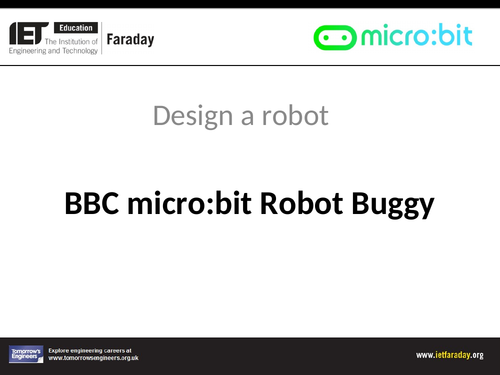



In this activity, learners will design a new robot that could help people in the future.
Programmable robotic systems are becoming an important part of industrial developments in design and technology. Robots are now being developed that can sense changes in their surroundings and respond accordingly.
As such, this lesson asks students to explore how electronic and mechanical systems can be integrated to create functioning products like a robot.
This lesson can be followed by Programming the robot buggy with the BBC micro:bit, where learners use the micro:bit to develop a robotic buggy that can successfully navigate a maze or path. These resources are part of a set of resources developed to aid the teaching of the secondary national curriculum, particularly KS3, supporting the teaching in computing and design & technology (D&T).
Activity: Designing a new robot that could help people in the future
Students will first look at existing robots that are used to help people in our Future Robots presentation and then brainstorm how robots could further assist people in the future.
Learners are tasked with designing a robot that’s unique. Their robot must include both electronic (e.g., programmable circuit board) and mechanical (e.g., motors for movement) parts and they students must explain how these systems work together.
They can use our Future Robot Design handout to draw their robots, adding notes explaining how the electronic and mechanical systems function. Students should use technical language and justify their design decisions (explaining input/output placement, materials, construction methods, etc.).
Download our activity overview for a detailed lesson plan on how to design a robot.
The engineering context
Robotics is an ideal topic for teaching about programmable components and embedded intelligence in products. These are key parts of the programme of study for Design and Technology at key stage 3.
It is also an ideal vehicle for using the BBC micro:bit in the classroom and developing the programming skills of learners.
Suggested learning outcomes
Students will be able to design a robot that can help people in the future. They’ll also improve their understanding of how electronic and mechanical systems can be integrated to create functioning products.
Download our activity sheet and related teaching resources
The activity sheet includes teachers’ notes, useful web links, and links (where appropriate) to the national curriculum in each of the four devolved nations; England, Northern Ireland, Scotland and Wales.
All activity sheets and supporting resources are free to download, and all the documents are fully editable, so you can tailor them to your students’ and your schools’ needs.
Download our classroom lesson plan and presentation for free.
Please do share your highlights with us @IETeducation.
Something went wrong, please try again later.
This resource hasn't been reviewed yet
To ensure quality for our reviews, only customers who have downloaded this resource can review it
Report this resourceto let us know if it violates our terms and conditions.
Our customer service team will review your report and will be in touch.